Have you ever gone to a specific grocery store to buy fruit and vegetables because you knew their quality was better than another store? If you have, like most of us, you probably don’t mind if those items are priced a little higher because it’s the quality that you’re looking for. Whether its blueberries or strawberries or apples, or crispier and bigger heads of lettuce, you don’t mind paying a higher price because you know you are paying for quality.
With fruits and vegetables, every harvest can have different factors that produces various levels of quality for growers. Microsoft Dynamics 365 for Finance and Operations has the functionality with its Batch Attributes and Attribute Based Pricing to record an actual measurement as an attribute and then calculate a price accordingly.
To illustrate this feature, we’ll use a company that grows (or buys) apples to sell to grocery store chains. Our first step is to set up a Quality test that will record a measurement for us. In this example, we will measure apple sweetness. Apple sweetness is measured by Brix degrees, which is the measurement of sucrose in the fruit. For apples, an acceptable Brix degree could be as low as 9 or as high as 14, with 14 being the sweetest. A company may sell apples at six prices based on the Brix measurement.
First, we set up the instrument to measure the Brix, as you can see in this screenshot for the Brix Meter.
Inventory management > Setup > Quality control > Test instruments
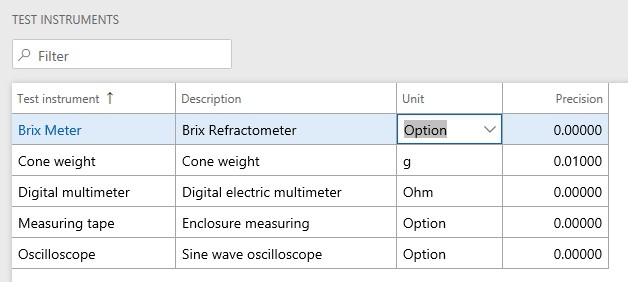
Next, we create the test, as you can see in the screenshot for the Brix Test.
Inventory management > Setup > Quality control > Tests
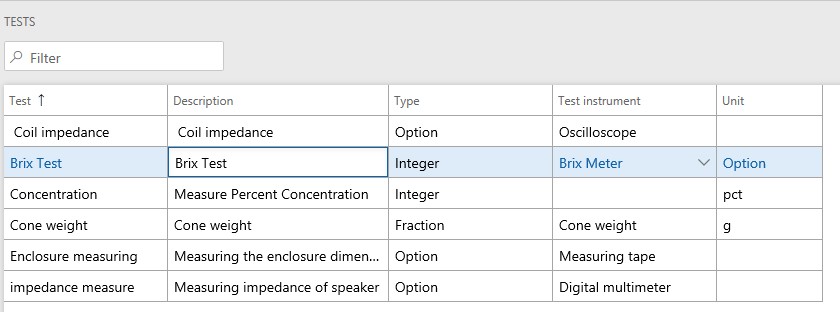
Then, we indicate the possible outcomes.
Inventory management > Setup > Quality control > Test variables – Outcomes tab

Next, we create the test groups. This is where we would assign a test or tests to be conducted. Products usually have multiple tests; for example, with apples, there could be additional tests done that recorded the size of the apple. For this example, we will use the Brix measurement.
Inventory management > Setup > Quality control > Test groups
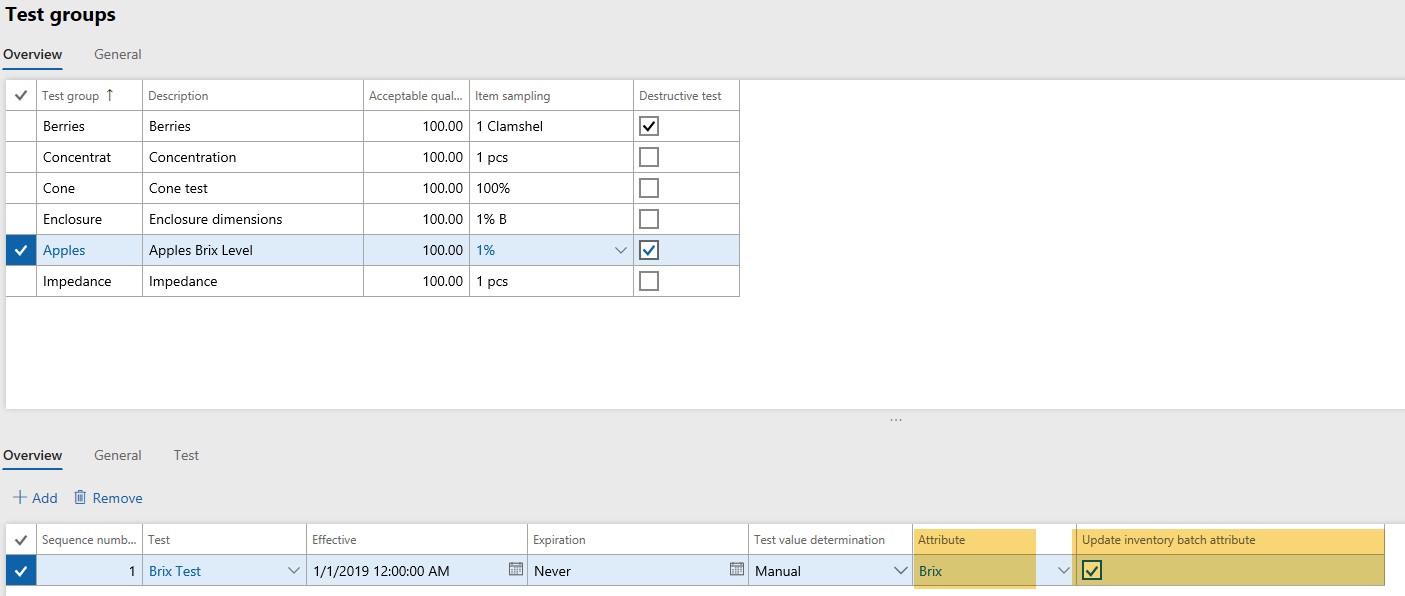
For our purposes, the Test group form is important because of the two highlighted areas: the Attribute and Update inventory batch attribute fields. Setting these fields as shown means that whatever test result we get, we are going to record it on the Batch attribute and update the inventory batch. This is how we will eventually set a selling price for the batches. Here is a better view of those two fields:

After we have created all the testing data, we have to relate the product to the tests through the Quality groups form.
Inventory management > Setup > Quality control > Quality groups
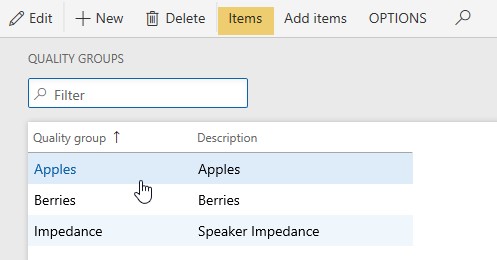
You can click Add items in the action pane. On that form, you can select item numbers to be tested.
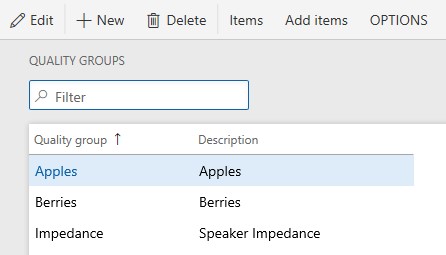
We’re not going to cover the Quality associations, which could create an automatic order to test the apples at a particular time (for instance, when they arrive from the grower). We’re going to go straight to setting sales prices based on the attribute recorded at the time of testing.
If we take a look at the Batch attribute setup, we see that it can be between 9 and 14, and we have selected 12 as the target. In this case, we have 12 the target since that is the desired rating for the apples for the majority of customers.
Inventory management > Setup > Batch > Batch attributes

Next, on the Attribute-based pricing details form, you see what are called “elements.” These are the variables from which you calculate pricing.
Procurement and sourcing > Setup > Prices and discounts > Attribute-based pricing details
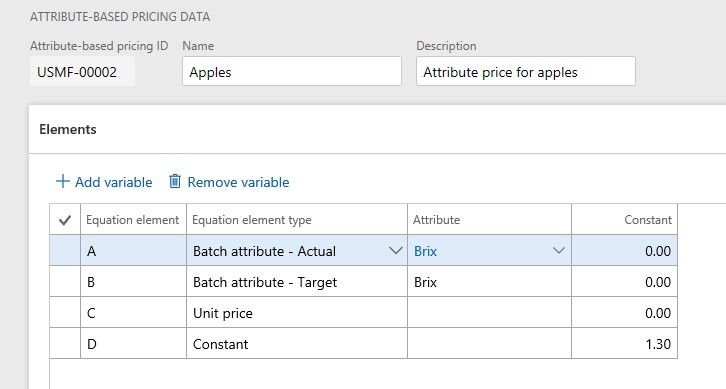
For my apples, I have selected these elements:
- Batch attribute – Actual. For Brix, we use the Brix degrees that was assigned during testing (between 9 and 12).
- Batch attribute – Target. For Brix, we set up a target of 12 Brix degrees.
- Unit price. This represents the inventory cost of the item.
- This is the factor that will be used to calculate the actual sales price.
Then, at the bottom of the form in the Equation FastTab, we create the formula to calculate the final sales price.
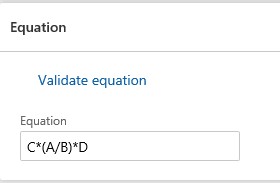
This equation means that my final sales price will be the inventory cost, multiplied by the percentage of the actual attribute related to the target attribute, which would then be multiplied by 1.6.
Here is a table of the different calculations of prices
| Unit Price | Attribute | Target | Derived % | Constant | Sales Price |
| .30 | 9 | 12 | 75% | 1.6 | .36 |
| .30 | 10 | 12 | 83.33% | 1.6 | .40 |
| .30 | 11 | 12 | 91.66% | 1.6 | .44 |
| .30 | 12 | 12 | 100% | 1.6 | .48 |
| .30 | 13 | 12 | 108.33% | 1.6 | .52 |
| .30 | 14 | 12 | 116.66% | 1.6 | .56 |
Finally, to use that pricing, you would create a trade agreement that has the column to insert that record, as shown in the screenshot below:
Sales and marketing > Prices and discounts > Trade agreement journals

I’ve now shown you how you can factor in the attribute of a product to determine what the sales price would be of that product. This is a very common practice with fruits and vegetables.
Want to learn more about Dynamics 365 for Finance and Operations? Visit academy.rsmus.com for eLearning courses and information about our hosted training classes in Denver! Or contact our Microsoft Dynamics experts at RSM (855) 437-7201.

 RSMUS.com
RSMUS.com